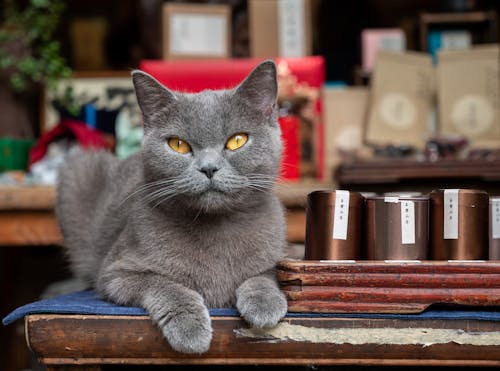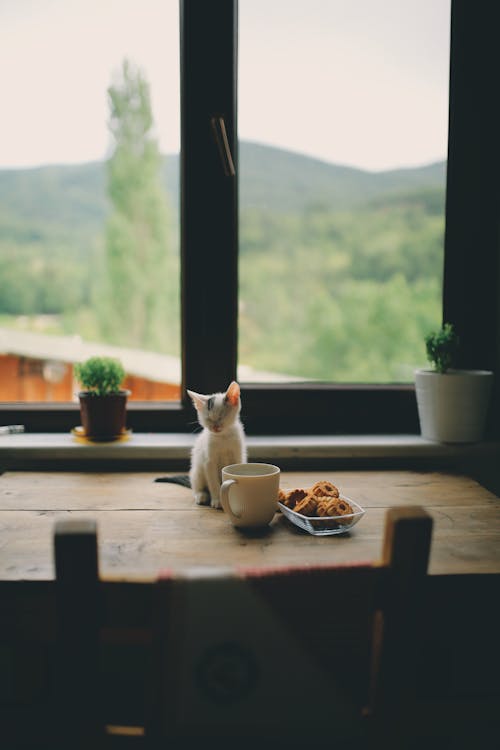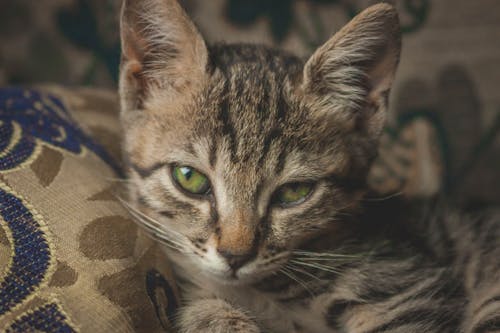Many cat owners have faced the frustrating issue of their furry friends leaping onto tables, often to the point of feeling like giving up on the matter altogether. Understanding the underlying reasons for this behavior can shed light on how to address it effectively. Cats are complex creatures with various instincts that influence their actions, and jumping on tables is often rooted in a mix of natural instincts, comfort-seeking behavior, and the desire for attention.

One primary reason cats jump onto tables is their innate hunting instinct. Cats are natural hunters, and their instinct drives them to seek elevated positions where they can observe their surroundings. While domestic cats do not need to hunt for food, they are still influenced by these instincts and will look for high places to survey their environment. Tables, being stable and conveniently located, often become the go-to spot for curious felines. From this vantage point, they can monitor everything happening around them, satisfying their innate desire to keep an eye on potential prey or threats.
In addition to their hunting instincts, cats often feel safer and more confident when they are elevated. Higher ground allows them to take stock of their territory, which can provide a sense of security. Many cat owners might wonder what threats exist in the home that require such vigilance, but cats can feel insecure around other pets or even in relation to their human companions. By climbing onto tables or other elevated surfaces, they can keep track of their surroundings and maintain a feeling of control. Additionally, among cats, those in higher positions are often regarded as more dominant, so climbing can also serve as a display of confidence.
Another motivation for this behavior is comfort. During colder months, cats often seek warmth, and tables can be a more comfortable resting spot than a cold floor. If a table is located near a sunny window, it becomes an ideal sunbathing location for a cat, which can lead to frequent table occupation. The warmth and comfort provided by such locations can easily entice cats to leap onto tables for relaxation and warmth.
Lastly, cats are creatures of habit, and they may jump onto tables to seek attention from their owners. The height of a table often aligns with a seated person's eye level, making it an attractive spot for a cat wanting to interact with their human. If a cat realizes that jumping on the table garners attention, whether positive or negative, they may repeat this behavior to maintain that interaction.
To manage this table-jumping behavior, it is essential to approach the situation with patience and understanding. Reacting with anger or punishment can lead to stress and anxiety for your cat. Instead of scolding, gently encourage your cat to come down from the table or pick them up and place them on the floor. Positive reinforcement can also be effective; rewarding your cat when they choose to stay off the table can help reinforce desired behaviors.
Reducing the appeal of the table can also be an effective strategy. Observing your cat's behavior can provide insight into their motivations for jumping. If your cat frequently leaps onto the table to gaze out the window, consider moving the table away from that area. By eliminating the enticing factors, you can help deter them from jumping up in the first place.
Another option is to create alternative spaces that satisfy your cat’s instincts. Setting up a cat tree or a platform that offers a similar height can provide your cat with a place to climb without resorting to the dining table. By giving them a designated spot that fulfills their desire for elevation, your cat is likely to abandon the table for more acceptable alternatives.
In summary, addressing a cat's habit of jumping onto tables requires a multifaceted approach that acknowledges their instincts and provides alternative solutions. With understanding and patience, you can encourage your feline friend to find satisfaction in places that are more suitable, ensuring a peaceful coexistence between you and your beloved pet.

Understanding and Managing Your Cat's Table Jumping Behavior
For many cat owners, the challenge of a feline friend constantly jumping on tables can feel insurmountable. This behavior, while often frustrating, is deeply rooted in a cat's natural instincts and needs. Rather than simply seeking to climb higher, your cat's desire to perch on tables can stem from a variety of motivations, including their innate hunting instincts, their need for security, their desire for warmth, and their yearning for attention.
At the heart of this behavior lies the cat's instinct to hunt. Cats are natural predators, and their instinct compels them to seek elevated positions where they can observe their surroundings for potential prey. Even though domestic cats no longer need to hunt for their food, their behaviors are still influenced by this ancient instinct. Tables, with their stable surfaces and convenient height, become ideal spots for cats to perch and scan their environment. This urge to survey their territory is essential for fulfilling their instincts, making it challenging to deter them from this behavior.
In addition to hunting, cats also seek height as a means of safety. Being on a higher surface allows them to observe their surroundings without feeling vulnerable to threats. While you may wonder what dangers lurk in your home that would require your cat to seek refuge on a table, they might be more concerned about other pets or even wanting to keep tabs on your activities. A cat's need for security is often met by claiming higher ground, as it gives them a sense of control over their environment. This is particularly relevant in multi-pet households, where cats may feel the need to establish their territory and hierarchy.
Comfort is another crucial factor in why cats choose to jump on tables. The cold surfaces of the floor can be uninviting, especially during the winter months. Tables, particularly those positioned in sunny spots or near warm areas, can provide a cozy place for your cat to lounge and soak up warmth. If your table happens to be a sunny retreat, it's no surprise that your cat would prefer to claim that space as their own.
Attention-seeking behavior also plays a significant role. Cats are social creatures that thrive on interaction with their owners. A table, being at the same height as a seated person, offers an excellent vantage point for a cat looking to engage with you. If your cat learns that jumping on the table garners your attention—whether it's a reaction of laughter, annoyance, or even scolding—they may repeat the behavior to maintain that interaction.
To effectively manage this behavior, it's essential to approach the situation with empathy and understanding. Cats do not respond well to punishment, which can lead to stress and anxiety. Instead, when your cat jumps onto the table, gently guide them down or pick them up and place them back on the floor. It’s crucial to avoid yelling or scolding, as this can create fear and exacerbate the problem.
One effective strategy is to reduce the attractiveness of the table. Take note of what draws your cat to jump up. If it’s a view of the outside world, consider relocating the table to an area where it doesn't provide access to enticing sights. By making the table less appealing, your cat may be less inclined to jump on it.
Creating alternative climbing options is another valuable approach. Invest in a cat tree or a climbing shelf that provides a similar elevation to the table. By offering an appealing alternative, you can satisfy your cat’s instinctual need for height without allowing them access to your dining table. Cats are more likely to choose these designated areas over the table if they feel it provides them with the same satisfaction.
Lastly, positive reinforcement is an excellent way to encourage desired behavior. When your cat opts to stay off the table, reward them with treats or affection. This approach helps reinforce the behavior you want to see, making it more likely they will repeat it in the future.
Understanding why your cat feels compelled to jump on tables is key to addressing the behavior effectively. By acknowledging their instincts and providing suitable alternatives, you can help your cat feel secure and fulfilled without sacrificing your tabletop space. With patience, empathy, and a little creativity, you can find a balance that allows both you and your feline friend to coexist happily, ensuring that your home remains a comfortable space for everyone.
